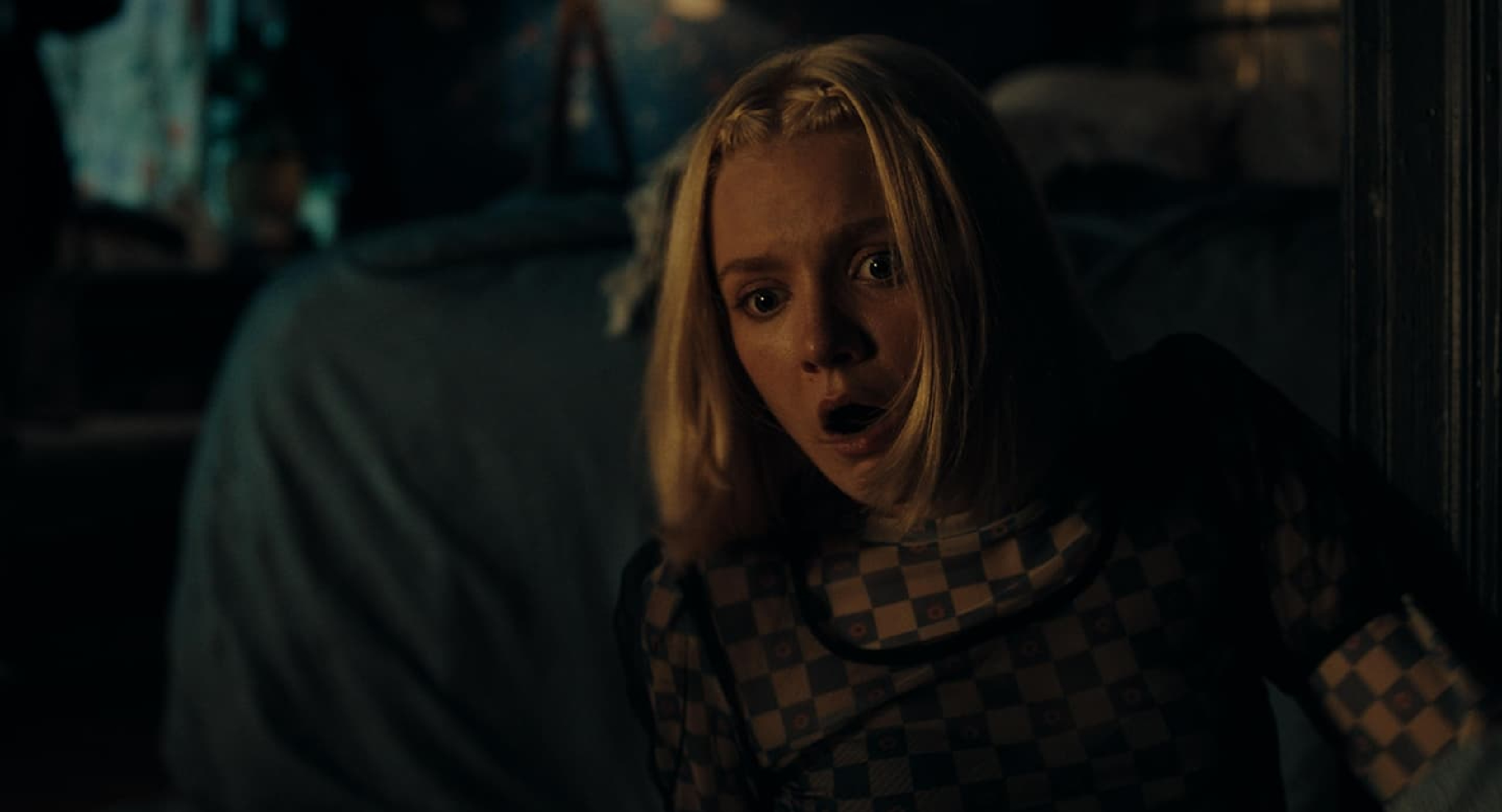Appendage – Film Review
Published October 2, 2023

Anna Zlokovic‘s body horror film Appendage transports viewers to a nightmare journey inside the mind of Hannah, who is portrayed by Hadley Robinson with a palpable sense of vulnerability. The film serves as a sobering reminder that, hidden beneath the surface of our daily lives, insecurities and self-doubt can fester and take on unimaginable forms. Despite having an original premise and delving into the unsettling world of body horror, Appendage doesn’t quite live up to its potential, leaving viewers feeling both fascinated and frustrated.
Hannah, a young fashion designer whose outward appearance belies internal turmoil, serves as the protagonist of the story. Robinson’s performance is exceptional; it expertly and authentically conveys Hannah’s inner conflict. As the character’s crippling self-doubt manifests physically as The Appendage, a grotesque growth that serves as a metaphor for her anxieties, it is fascinating and terrifying to watch her spiral into madness.
There is no denying how grotesque and well-done the body horror elements in Appendage are. The practical effects are impressive and show how committed the filmmakers were to creating a viscerally unsettling experience. The audience is particularly affected by the visceral transformation scenes, which leave an enduring impression. As viewers watch Hannah’s descent into madness, Zlokovic expertly uses body horror to elicit a visceral reaction and make them squirm in their seats.
Despite its fantastical premise, the supporting cast, which includes Emily Hampshire as Claudia, Deborah Rennard as Stacy, Brandon Mychal Smith as Kaelin, and Kausar Mohammed as Esther, gives strong performances that help to ground the story in reality. The interactions between these characters give the story depth and provide a window into the various ways that people deal with insecurities. The supporting characters, however, don’t get enough time to grow, which keeps them from becoming fully realized people. As a result, the audience feels as though little has been learned about their experiences with The Appendage.
Powell Robinson oversaw the film’s cinematography, which is a feast for horror film buffs. The use of shadow and light creates an eerie atmosphere that heightens the story’s overall sense of dread. The overall viewing experience is improved by the claustrophobic and unsettling imagery that heightens the tension. The film’s sound design and score also add to the eerie atmosphere, successfully enveloping the audience in Hannah’s collapsing world.
The capacity of Appendage to elicit sympathy for its protagonist is one of its strengths. Despite its flaws, Hannah’s journey is unquestionably moving and will resonate with anyone who has ever struggled with self-doubt or low self-esteem. Hannah is a likable and sympathetic character thanks to Robinson’s honest and open portrayal, which stirs up real feelings in the audience.
The exploration of the psychological aspects of body horror is where Appendage falters. The film makes passing allusions to more important themes, like how societal pressures affect people and how fragile self-esteem is, but it doesn’t go as deeply into these topics as it should. Although obvious, Hannah’s fears are never fully explored, leaving the audience yearning for a deeper comprehension of her inner demons. The script only briefly touches on these intricate issues without addressing their underlying psychological complexities, leaving viewers longing for a deeper and more in-depth investigation.
James Wan‘s Malignant, which does a much better job of exploring the body horror themes and ideas as well as its approach to being unapologetically campy, is also an undeniable source of inspiration for this one. Don’t get me wrong; it’s fantastic if subsequent films have a similar feel to Malignant. It’s a little difficult to look past the inspiration when it’s so obvious, though. At times, it resembles a spin-off to Malignant.
A body horror film with strong central performance and striking visuals, Appendage captivates with its grotesque imagery. The film does a great job of setting a disturbing mood and evoking visceral reactions, but it falls short in terms of fully delving into the psychological complexities of its themes and characters. The audience is left with a sense of unrealized potential due to the shallowness of the character development and thematic exploration. Despite its flaws, Appendage manages to make an impression that sticks with the audience, encouraging reflection on the demons that lurk beneath our surface and the significance of facing our fears before they overwhelm us.
